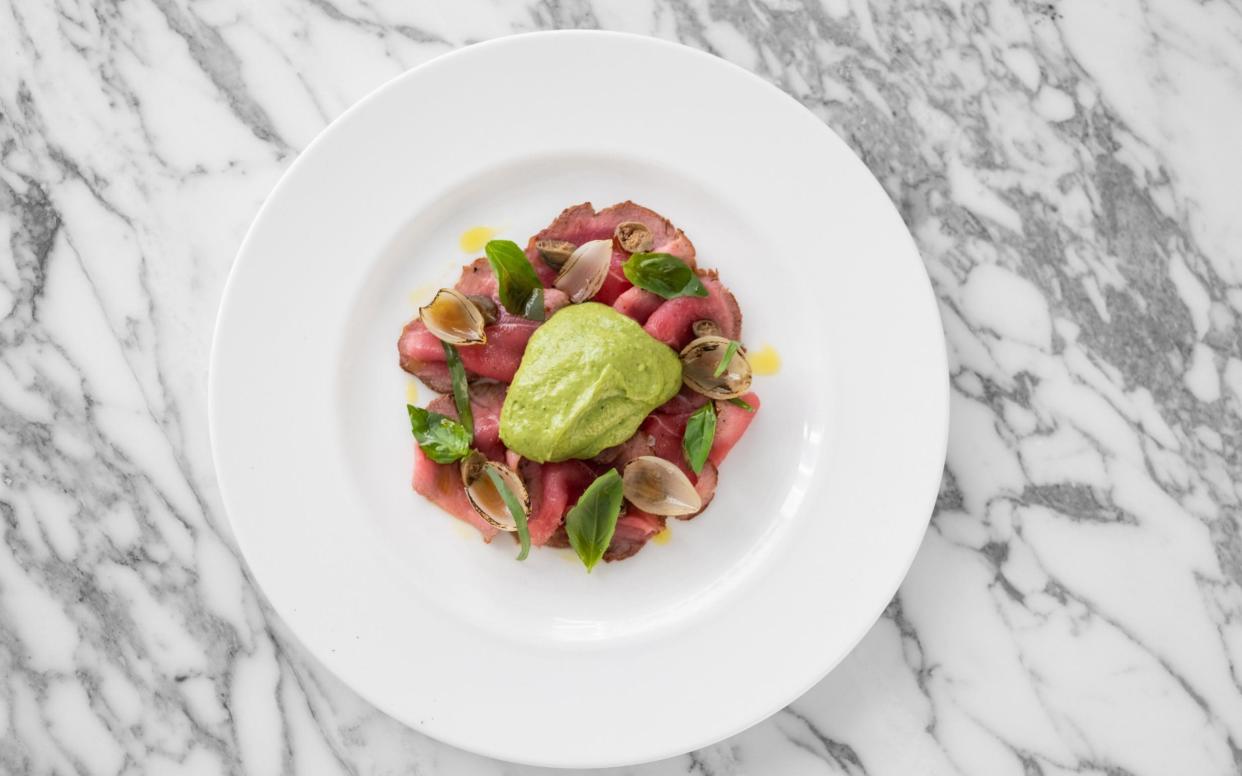Keith Miller reviews Emilia, London W1: superb food in an expensively neutral setting


Not many people seem to share my irritation at streets bearing the entire name, rather than just the last name, of whatever eminence they’re named after: James Joyce Road, Nyree Dawn Porter Boulevard, Geoff Capes Avenue.
There are exceptions, of course: Billy Fury Way, a reeking snicket that runs between Finchley Road & Frognal and West Hampstead Overground stations in north-west London, trips off the tongue well enough – and the “Billy” offsets any risk of confusion with the latest Mad Max project. In general, though, I feel that we’re on the planet for the wink of a dormouse, and we might prefer to spend as little of that time as possible mastering street names. But it’s probably just me.
Still, hats off to the Romans for their concision in this regard. The network of highways running across Italy, most if not all of which led to Rome, carried a series of laconically beautiful place names and clan names, many still in use today: Appia, Aurelia, Flaminia, Latina and – in the north-eastern part of the peninsula, running from Piacenza to Rimini, close to what was then the boundary between Italy and Cisalpine Gaul – Aemilia.
It’s well documented which member of the gens Aemiliae got the fam immortalised by the Ancient Highways Agency: the two-time consul M Aemilius Lepidus, great-grandfather of the slightly shifty one in Shakespeare’s Julius Caesar. In time, long after Rome was over and done with, at least in any sense we would recognise, the road would lend its name to a region, or at least half of one, along with Romagna (that’s what the Byzantines called the “exarchate”, i.e. the bit of Italy they continued to administer). So it is that a hero of the battle of Cannae now lives on in a tony new Italian restaurant at the back of a West End auction house.
It’s not because of its associations with one particular scion of the Roman Republic that Emilia is so named, of course (these guys weren’t what you would call foodies: Manius Curius Dentatus, one of Aemilius’s predecessors, once refused a bribe from the Samnites, pointing out that no one who was content to eat turnips for dinner, as he happened to be doing, had any need of gold). But Emilia-Romagna is the heart, or, better, the guts of Italian gastronomy: rice and pulses from the floodplain of the Po, balsamic vinegar from Modena, cheese and ham from Parma.


We've noticed you're adblocking.
We rely on advertising to help fund our award-winning journalism.
We urge you to turn off your ad blocker for The Telegraph website so that you can continue to access our quality content in the future.
Thank you for your support.
Need help?
Visit our adblocking instructions page.

 Yahoo News
Yahoo News 
